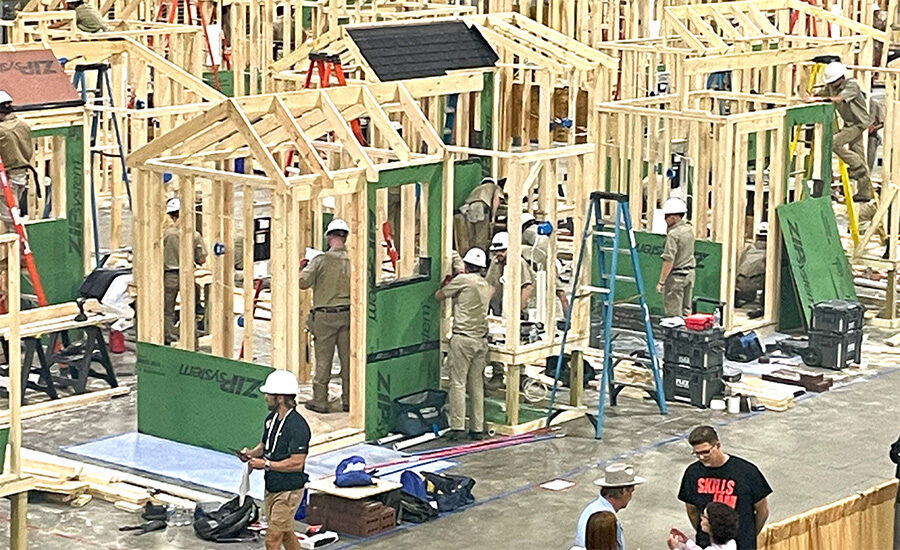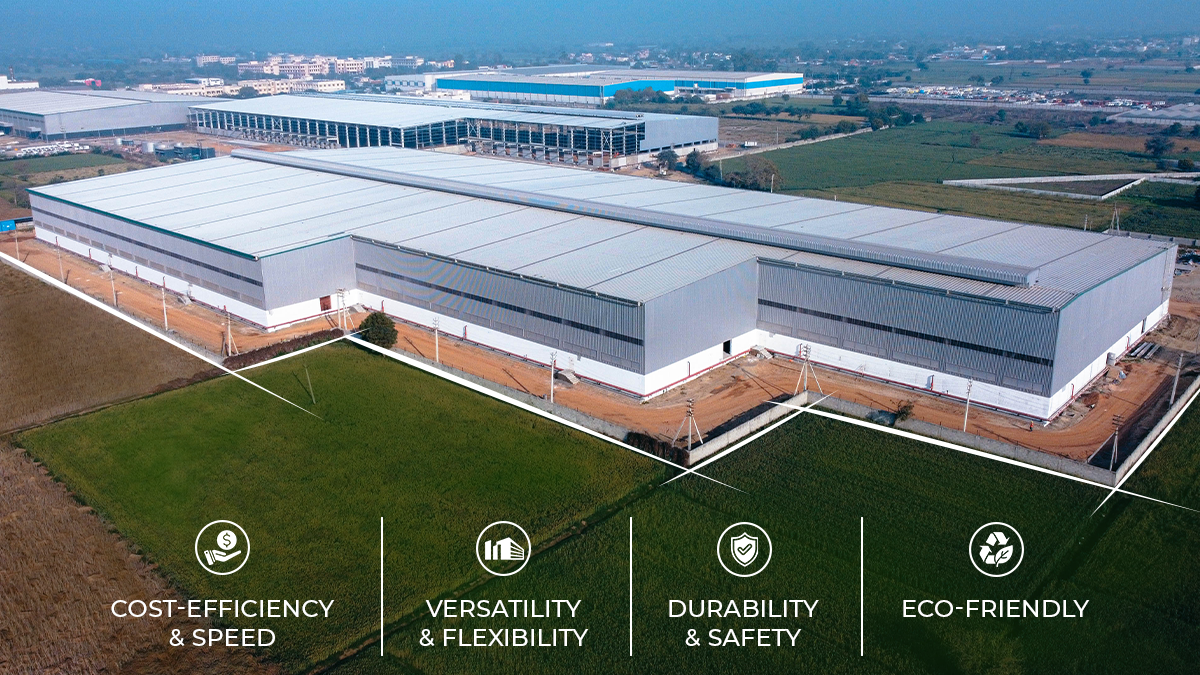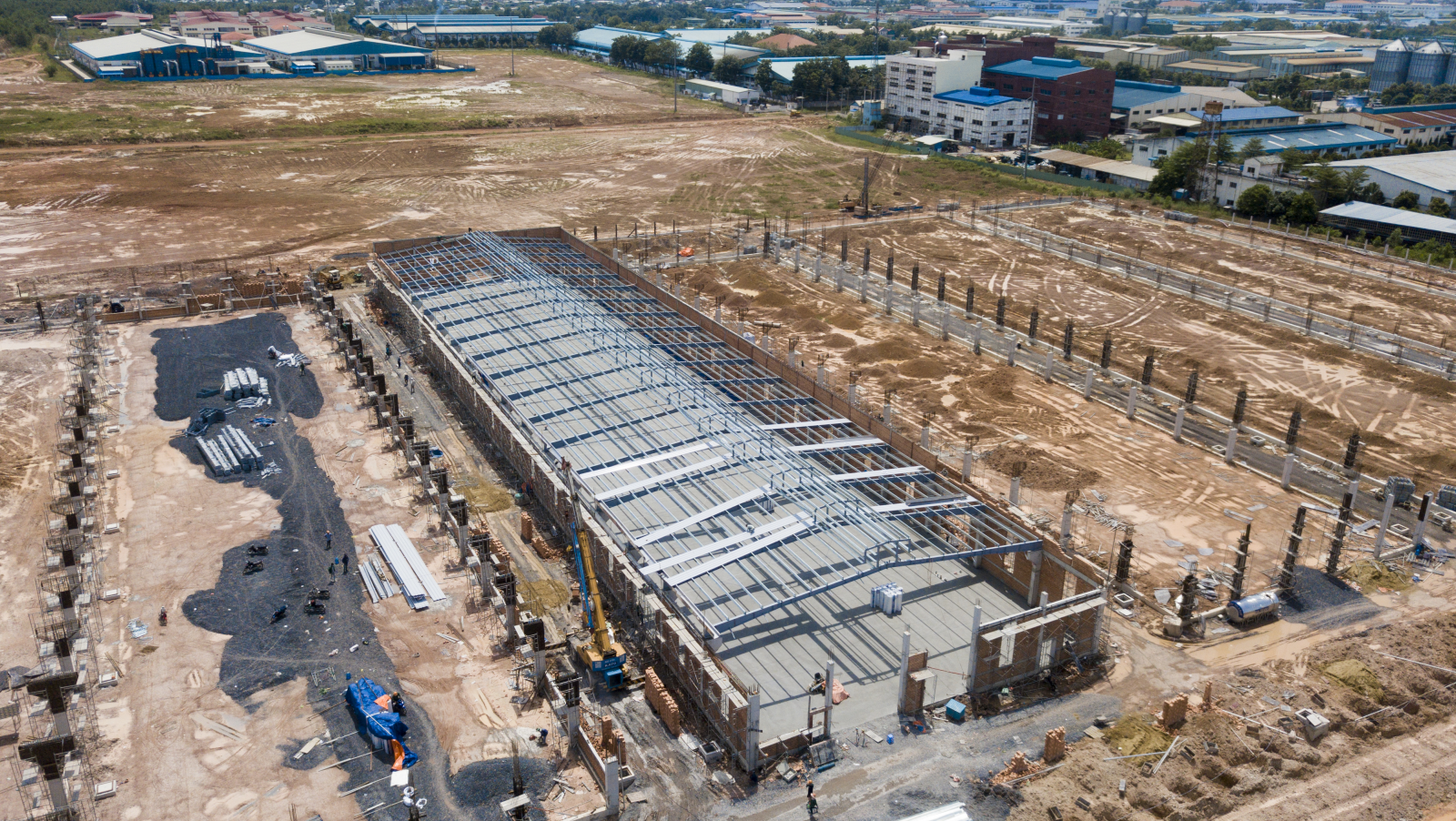
SkillsUSA Sells Gen Z on Work in Tech‑Driven Building Trades
[ad_1]
As the construction industry wrestles with an aging workforce and chronic labor shortages, Gen Z’s growing presence and its comfort with technology, was on full display at the 61st annual SkillsUSA National Leadership and Skills Conference in Atlanta in late June.
SkillsUSA, a nonprofit partnership of students, educators and industry practitioners, stages regional and state competitions before the national event each summer. A record 18,000-plus attendees, including 6,500 state champions, participated in 115 craft competitions, including those in carpentry, roofing, HVAC and welding. The adjacent TECHSPO exhibit floor showcased next‑generation training tools.
Exhibitors ranged from manufacturers of mixed-reality simulators for welding, collision repair and HVAC diagnostics to demonstrations of drone-enabled roof inspections and cloud-based graphic communications platforms that mirror modern job site workflows.
In the mobile robotics technology contest, teams had the option to submit digital engineering notebooks via a Competitor Materials Portal, foreshadowing a complete transition to digital by next year’s skills competition.
“There’s a huge skills gap — construction alone is approximately 500,000 nationwide. We’re also seeing many retire from the skilled trades,” Shelly Travis, executive director of SkillsUSA, explained.

RELATED
ENR’s 2025 Top 20 Under 40 Say They’re Ready to Embrace Industry Change
Getting the Next Generation
“All the messaging that’s been put across is, ‘these are demanding jobs,’ but framing every task by its intensity only pushes people away,” explained George Carrillo, CEO of the Hispanic Construction Council.
His remarks highlighted SkillsUSA’s mission to showcase the full range of career options rather than focusing solely on labor intensity. “Instead of pushing people to the industry, it’s pushed people away,” he said.
SkillsUSA counters this by pairing traditional skill rounds—such as nail-gun speed tests and precise weld-bead challenges—with tech-driven events, including mobile robotics and virtual-reality roofing simulations, giving students a broader view of career paths beyond brute strength.
“When students don an Oculus [virtual reality] headset to simulate steep‑slope roofing or pilot a drone for site surveys,” Travis said. “They see careers that pay well and advance quickly.”
RELATED
ICE Raids Create Chilling Effect on Already Stretched Industry Workforce
High‑profile advocates have also been amplifying the message. Mike Rowe, notable diver into society’s grimiest gigs on Discovery Channel’s “Dirty Jobs,” and HGTV pioneer Ty Pennington, a perennial conference attendee, are using their celebrity to advance the cause.
“Under one roof, you’ve got so much building, so many engines, so many opportunities,” Pennington said, touring the commercial roofing pavilion, where participants gained lessons and practicie in how to heat-seal thermoplastic roofing membranes.
 Shelly Travis, executive director of SkillsUSA (center), with competitors on the exhibit floor of the 61st National Skills Conference in Atlanta. She underscored the urgency of closing the nation’s skilled‑trade workforce gap. Photo by Bryan Gottlieb/ENR
Shelly Travis, executive director of SkillsUSA (center), with competitors on the exhibit floor of the 61st National Skills Conference in Atlanta. She underscored the urgency of closing the nation’s skilled‑trade workforce gap. Photo by Bryan Gottlieb/ENRRecent U.S. Bureau of Labor Statistics data suggest Gen Z is stepping up. Workers aged 18 to 25, the oldest of that generation, accounted for nearly one‑quarter of new hires in skilled‑trade industries in 2024, despite making up only about 14% of the U.S. workforce.
A nationwide survey last fall by Intuit Credit Karma found that 38% of Gen Z adults are now employed in building trades, compared to 34% of millennials and 30% of Gen Xers.
“There has been a promising uptick in Gen Z participation in the U.S. construction workforce,” said John Mielke, senior director of apprenticeship at Associated Builders and Contractors. “While this is great news, we still have a long way to go to shore up the talent pipeline and address the industry’s chronic workforce shortage.”
Among Gen Z members with bachelor’s degrees, 34% work in a skilled trade, and another 3% intend to pursue one, Mielke said. “Many new entrants see a career in construction as a great alternative to a college degree because the industry provides clear pathways for advancement and quicker entry into the workforce.”
For prospective workers weighing career paths, lifetime earnings data provide a compelling financial framework for decision-making. BLS figures for 2023 show median weekly earnings of $899 for those with only a high school diploma, rising to $1,493 for bachelor’s degree holders.
Georgetown University’s Center on Education and the Workforce reports median lifetime earnings of $1.6 million for high school graduates, $2.0 million for those with an associate degree and $2.8 million for bachelor’s degree holders—a $1.2 million premium for a four‑year degree.
Yet skilled trades can approximate or surpass earnings of some college graduates, especially when factoring in lower education costs and apprenticeships that pay as trainees learn.
Plumbing, electrical work and HVAC apprentices typically earn 50% of fully qualified wages, with journey-level worker pay reaching median annual salaries in the $55,000 to $70,000 range, according to U.S. Dept. of Labor statistics. Over a 40-year career, a trade professional earning $60,000 annually could accumulate $2.4 million in gross earnings, narrowing the gap with degree holders and often sidestepping six-figure student debt burdens.
Policy Priorities and Industry Headwinds
Despite the momentum, headwinds persist. Uncertain and mixed message immigration policies, elevated borrowing costs and lingering tariff concerns continue to cloud project pipelines.
In Washington, bipartisan bills aim to bolster training. Sen. Tina Smith (D-Minn.), and Sen. Steve Daines (R-Mont.) reintroduced the Supporting Apprenticeship Colleges Act to fund outreach and support services at colleges. Similarly, Sens. Jacky Rosen (D-Nev.) and Marsha Blackburn (R-Tenn.) support the CONSTRUCTS Act to finance residential construction programs at community and technical colleges.
“Federal officials need to support, instead of undermine, our national infrastructure and economic development policies,” said Jeff Shoaf, CEO of the Associated General Contractors of America, in introducing its recent workforce survey.
The report showed that 94% of construction companies struggle to fill open positions, with 28% of contractors reporting at least 11 unfilled craft slots as of mid-2024; there has been little indication that the situation has since improved.
Carrillo added that the Hispanic Construction Council has proposed the “Building America Stronger” visa measure, which would grant work authorization to undocumented construction workers. Several industry trade groups have been advocating for similar measures.
Education experts stress early exposure. Rick Damato, editorial director emeritus of Roofing Contractor magazine, urges contractors to partner with local high schools on virtual reality and drone demos. “When students see technology that mirrors real‑world workflows, roofing becomes a high‑tech career, not just hammer and hatchet,” he said.
BLS data show overall job openings little changed at 7.4 million in April, with construction openings remaining well above pre‑pandemic levels—a sign of low churn among a thin talent pool.
Anirban Basu, chief economist at ABC, noted that although total openings have fallen from a December 2023 peak, “fewer openings do not equate to an abundance of available talent,” underscoring the ongoing need for both recruitment and retention efforts.
[ad_2]
Source link
Post a Comment
You must be logged in to post a comment.






